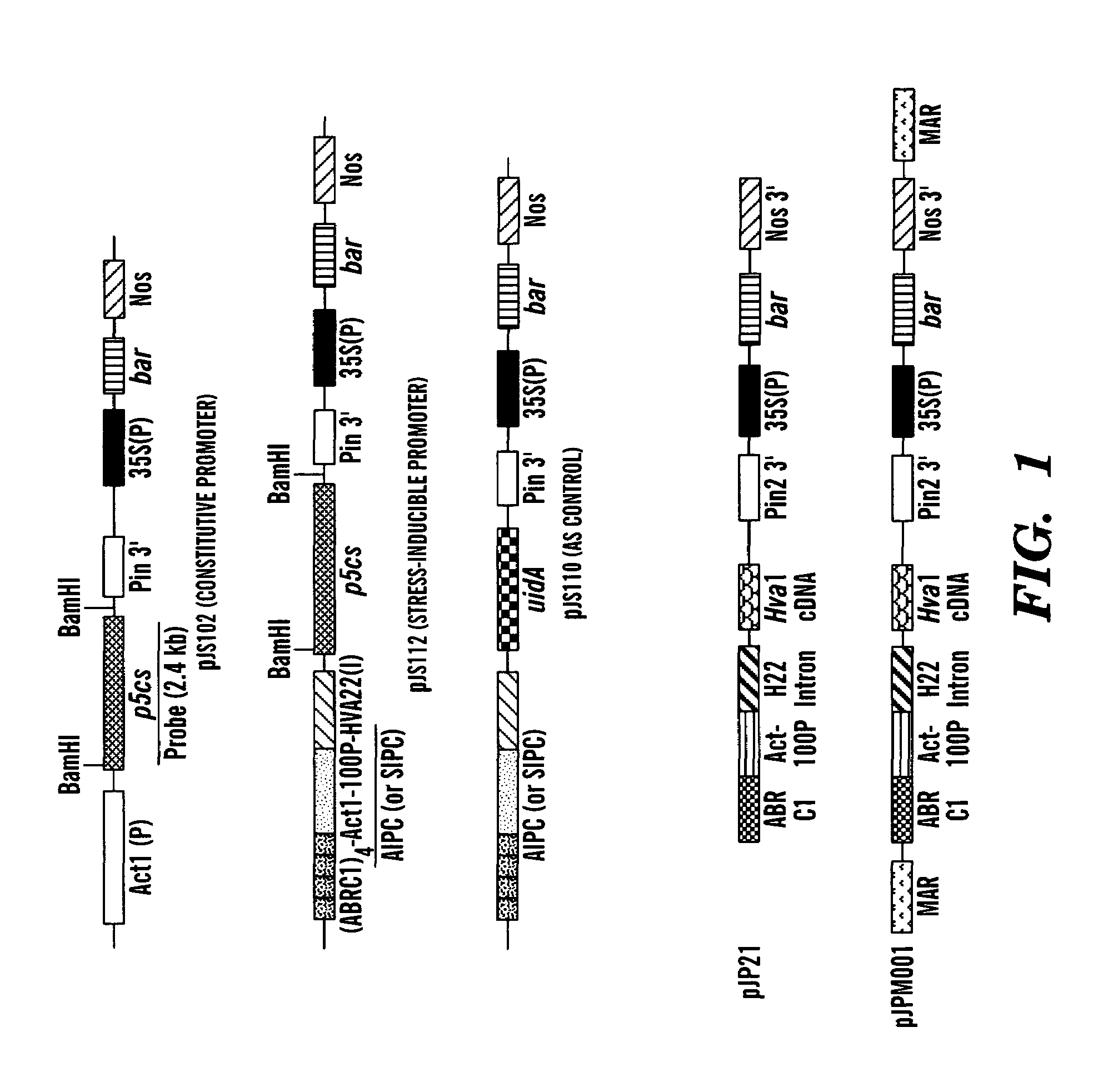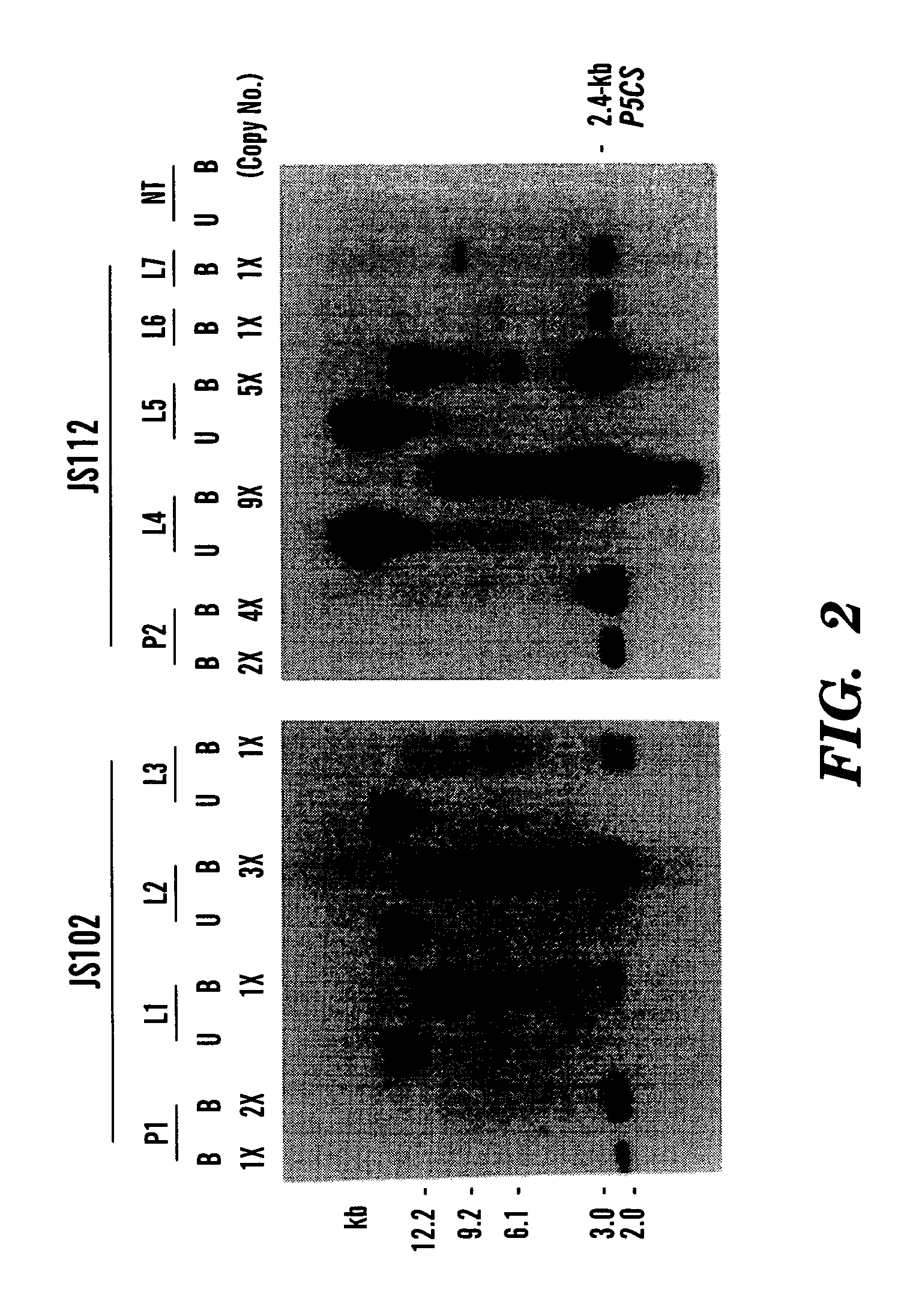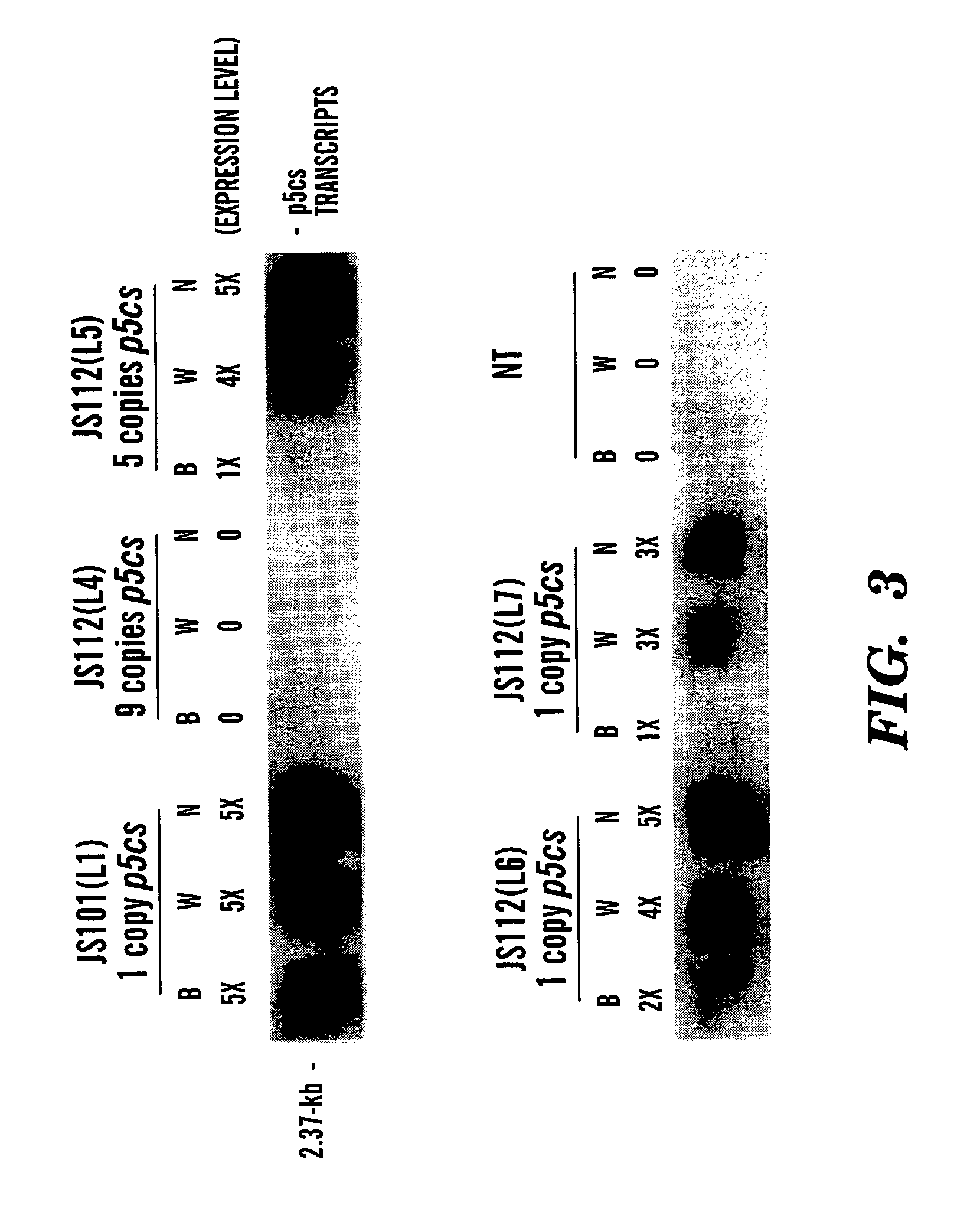Method of making water stress or salt stress tolerant transgenic cereal plants
a transgenic, salt-tolerant technology, applied in the field of transgenic cereal plants, can solve the problems of limiting plant growth and productivity, substantial decrease in crop yield, and high levels of salt in the soil (less than 100 or 150 mm) that are not suitable for planting most cereal crops, so as to increase the tolerance to salt stress and drought stress, increase the tolerance to water stress, and increase the biomass
- Summary
- Abstract
- Description
- Claims
- Application Information
AI Technical Summary
Benefits of technology
Problems solved by technology
Method used
Image
Examples
example 1
Plasmid Construction for Rice Transformation
[0062]Three plasmids were constructed (See FIG. 1). The first plasmid had a constitutive promoter, the rice actin 1 gene promoter (Act1), to drive the expression of p5cs (referred to as Act1-p5cs). A 2.4-kb SalI fragment containing the mothbean p5cs cDNA (Hu et al., “A Bifunctional Enzyme (Δ1-pyrroline-5-carboxylate synthetase) Catalyzes the First Two Steps in Proline Biosynthesis in Plants,”Proc. Natl. Acad. Sci. USA, 89:9354–9358 (1992), which is hereby incorporated by reference) was isolated from the plasmid pUbiP5CS, and this fragment was blunted with Klenow DNA polymerase and subcloned into the SmaI site of the pBY505 expression vector (Wang et al., “A Vector for Inserting Foreign Genes and Selection of Transformed Rice Plants,”Rice Biotech. Quarterly, 22:8 (1995), which is hereby incorporated by reference) to create pJS102 (pJS102: Rice actin 1 promoter / P5CS cDNA / Pin 2 3′ / / 35S promoter / bar / Nos 3′). The second plasmid had an ABA-induc...
example 2
Production of Transgenic Rice Plants
[0063]Calli were induced in LS medium (Cao et al., “Assessment of Rice Genetic Transformation Techniques,” in Rice Biotechnology, Toenniessen et al., eds, CAB International, Oxon, UK, pp 175–198 (1991), which is hereby incorporated by reference) from mature rice embryos (Oryza sativa L. cv. Kenfong), and suspension cultures were initiated from embryogenic calli in liquid AA medium (Cao et al., “Assessment of Rice Genetic Transformation Techniques,” in Rice Biotechnology, Toenniessen et al., eds, CAB International, Oxon, UK, pp 175–198 (1991), which is hereby incorporated by reference). Fine suspension cells (subcultured for 3 days prior to bombardment) were bombarded with tungsten particles coated with one of the three plasmids, according to the procedure described by Cao et al. (Cao et al, “Regeneration of Herbicide Resistant Transgenic Rice Plants Following Microprojectile-mediated Transformation of Suspension Culture Cells,”Plant Cell Reports, ...
example 3
DNA and RNA Blot Hybridization Analysis of Transgenic Rice Plants
[0064]For Southern blot analysis (See FIG. 2), genomic DNA from transgenic rice plants was carried out using 8 μg total DNA as previously described (Cao et al, “Regeneration of Herbicide Resistant Transgenic Rice Plants Following Microprojectile-mediated Transformation of Suspension Culture Cells,”Plant Cell Reports, 11:586–591 (1992), which is hereby incorporated by reference). Genomic DNA was digested with BamHI and separated in a 0.8% agarose gel. A DIG-labeled 2.4-kb p5cs coding sequence was used as a probe. For RNA blot hybridization analysis (See FIG. 3), total RNA from R2 leaves of transgenic rice plants was isolated as described (Hihara et al., “Isolation and Characterization of Two cDNA Clones for mRNA That are Abundantly Expressed in Immature Anthers of Rice (Oryza sativa L.),”Plant Mol. Biol., 30:1181–1193 (1996), which is hereby incorporated by reference). 20 μg of total RNA from the transgenic rice was sub...
PUM
| Property | Measurement | Unit |
|---|---|---|
| Mass | aaaaa | aaaaa |
| Mass | aaaaa | aaaaa |
| Mass | aaaaa | aaaaa |
Abstract
Description
Claims
Application Information
 Login to View More
Login to View More - R&D
- Intellectual Property
- Life Sciences
- Materials
- Tech Scout
- Unparalleled Data Quality
- Higher Quality Content
- 60% Fewer Hallucinations
Browse by: Latest US Patents, China's latest patents, Technical Efficacy Thesaurus, Application Domain, Technology Topic, Popular Technical Reports.
© 2025 PatSnap. All rights reserved.Legal|Privacy policy|Modern Slavery Act Transparency Statement|Sitemap|About US| Contact US: help@patsnap.com



